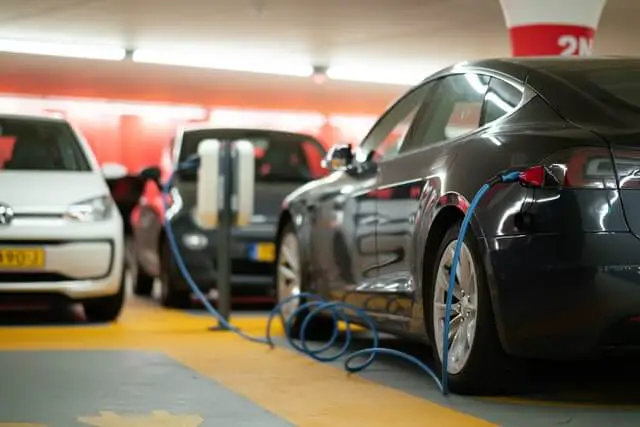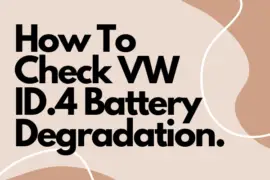Last Updated on May 30, 2023 by Rose Morah
If you are wondering how EVs are able to get you from point A to B, or how their batteries work, you are in the right place.
In this article, we are going to cover the following in detail:
- How an Electric Vehicle works.
- How EV batteries work.
- Type of batteries used in electric vehicles.
- Best EV alternative. (New technology).
How an electric vehicle works
How do EVs work?
The following are the major EV components that enable it to move from one point to another:
- Power inverter.
- Electric traction motor.
- Power electronics controller.
- Battery.
- Auxiliary battery.
- Charge port.
- DC/DC Converter.
- Charger.
- Transmission.
Before we look into these elements, let’s first dive into how EVs work.
Electric cars are powered by electric motors, which means that they do not require an ICE (Internal Combustion Engine) to move from one point to another.
So, when it comes to powering the EV, you first need to know what AC and DC mean.
AC – Stands for Alternating Current.
DC – Stands for Direct Current.
The battery in the EV functions using DC power while the main EV motor uses AC power. This means that the DC is converted into AC by the inverter.
See also:
Types of Electric Vehicles (EVs) and Which One You Should Buy.
How To Check Nissan Leaf Battery Health (Battery Degradation Status).
Where does the electric motor get the power?
The power is derived from the rechargeable battery. So, to break this down, this is what actually happens:
When you press the accelerator pedal, the battery power is converted from DC to AC for the electric motors.
The accelerator then sends a signal to the controller which adjusts/regulates the speed of the car by changing the frequency of the AC power from the inverter to the motor.
N/B. The controller adjusts the speed of the car based on how the driver uses the acceleration power.
The motor then responds by turning the wheels through a cog.
Below is a diagram of how electric cars work
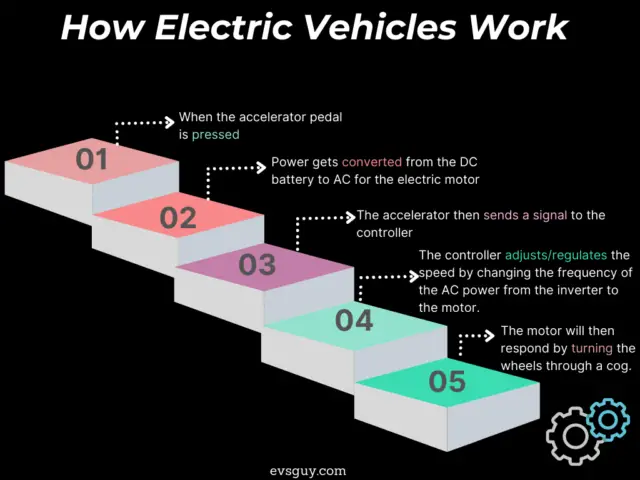
What happens when you press the regenerative braking?
The motor becomes an alternator to produce power that is then sent back to the battery.
Do electric cars have gears?
No, electric cars do not have a gearbox.
Functions of the main components of an EV

| EV Parts | Functions | |
| 1. | Battery | > It stores electrical energy in the form of DC current. > The battery transmits electrical energy to the inverter. |
| 2. | Auxiliary Battery | It provides electricity that powers the vehicle’s accessories. |
| 3. | Power Inverter | > It converts the battery DC current to AC current to be used by the electric motor. > It also changes the AC current to DC current when you are using regenerative braking ( to conserve power). |
| 4. | Electric Traction Motor | It uses the power from the traction battery pack to turn the transmission and wheels |
| 5. | Power Electronics Controller | > This is a combination of inverter and converter that works to recharge the battery pack of an EV when you use regenerative braking. > It also controls the flow of energy from the battery. |
| 6. | Charge Port | Enables you to charge the EV battery pack from an external power supply. |
| 7. | DC/DC Converter | Its main function is to convert higher voltage DC power from the battery to lower DC power to recharge the auxiliary battery. |
| 8. | Charger | There are 2 types of charger, which are; > The On-Board Charger – located inside the vehicle. > Off-Board Charger – Also known as EVSE located outside (not installed in the car). |
| 9. | Thermal System Cooling | It maintains and regulates the temperature of the electric motor and other components of the EV. |
| 10. | Transmission | The transmission transfers mechanical power from the motor to drive the vehicle’s wheels. |
Check out the best EV home chargers(EVSE) according to EV owners & experts.
What’s the difference between an EV motor and an engine?
An EV motor converts electrical energy from the battery into mechanical energy. An engine, on the other hand, converts thermal energy into mechanical energy (combustion).
What are the differences between ICE (Internal Combustion Engine) vehicles and EVs?
| ICE | EVs | ||
| 1. | They have a gas tank. | 1. | They have a battery. |
| 2. | Have an engine. | 2. | Have an electric motor. |
| 3. | They have a tailpipe. | 3. | They have no tailpipe. |
See also: Hyundai Kona Electric Pros and Cons (According to Owners).
Electric Vehicle Battery
Lithium-ion is the most common type of battery used in electric vehicles.
Lithium is mined and refined to lithium hydroxide and other compounds then sold to battery manufacturers.
Western Australia is the World’s largest hard-rock lithium mine and Tianqi lithium produces almost half of the world’s production of lithium.
Battery packs on EVs are made of thousands of lithium-ion cells that power them.
How does the lithium-ion battery work?
When an electoral charge is added to the lithium-ion battery, the lithium ions move from the positive to the negative electrode.
On the other hand, when the energy is released from the lithium-ion batteries, the lithium ions move from the negative electrode to the positive electrode.
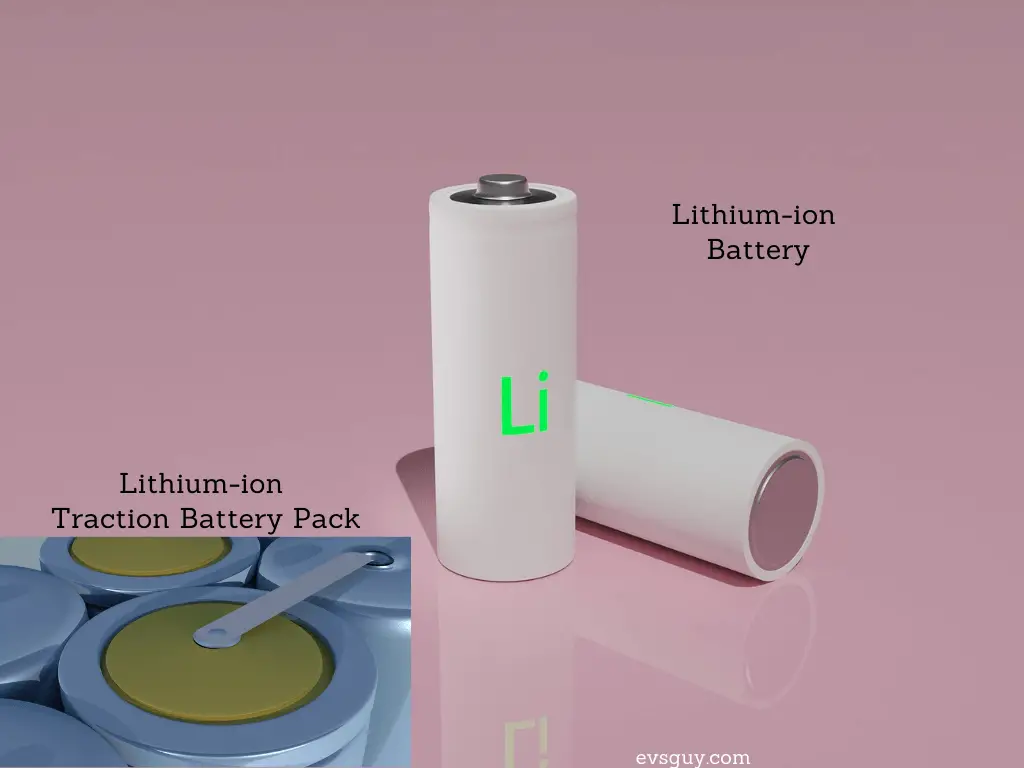
Two main advantages of lithium-ion batteries
- They have the ability to hold more charge.
- They have a longer lifespan compared to other types of batteries.
Disadvantages of lithium-ion batteries
- Under certain circumstances, there are risks of explosion, overheating, or catching fire.
But the good thing is, more EV manufacturers are now coming up with developments aimed at reducing these risks.
For example, the development of cooling features that are able to regulate the battery’s temperature.
- They degrade with time.
This means that they will need to be replaced with new ones after years of use.
- They have a limited range.
How far can you drive an EV on a full charge?
It depends on the vehicle. Each electric vehicle has a different range, battery size, and efficiency.
Basically, the range of any type of EV will mainly depend on the EV’s battery size.
The bigger the battery size, the more power you get to cover more miles.
How long does it take to charge an EV?
When it comes to EV charging, you get 3 charging speeds;
- Slow charging.
- Fast charging.
- Rapid charging.
For more information about EV charging, be sure to check out our article on the type of EV Charging.
What are the New Technology EV alternatives?
- Hydrogen Fuel Cells powered vehicles.
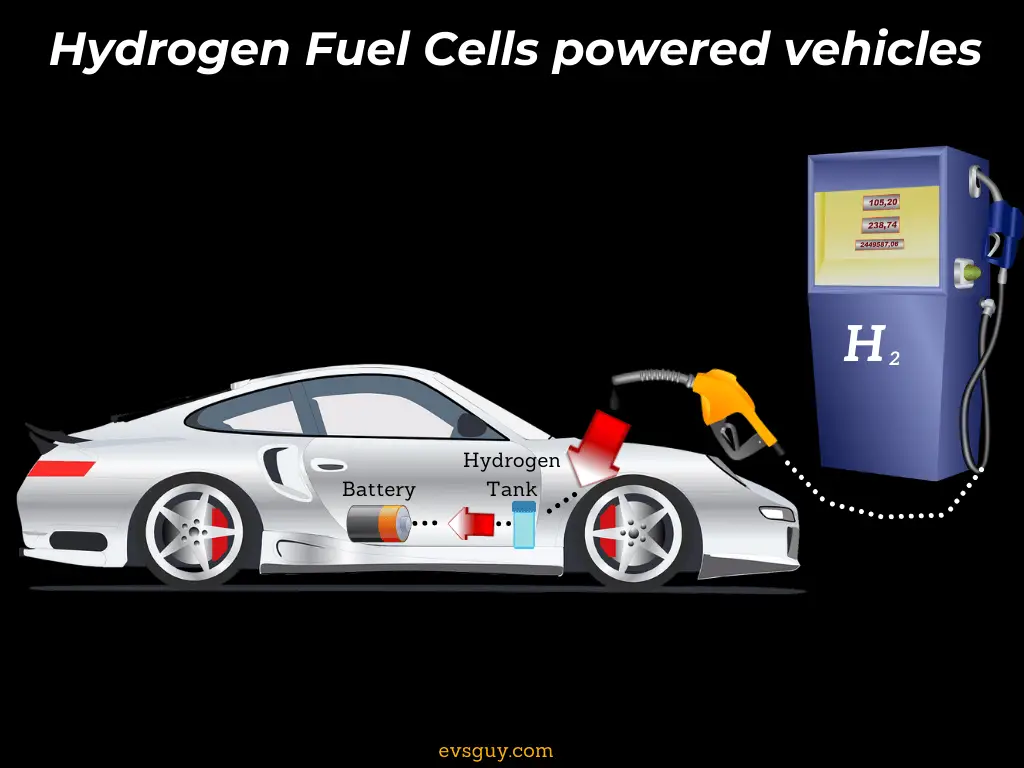
A good example of a hydrogen-powered vehicle is the Toyota Miria.
Compared to gasoline vehicles, they have a tank that is filled with liquid hydrogen as opposed to gasoline/fuel.
Hydrogen is fueled into the car along with oxygen to form a reaction that results in mechanical energy, which enables the car to move.
Advantages of a hydrogen-powered vehicle
- The final waste product, which is water vapor, does not do any harm to the environment.
- The tank fills within minutes compared to charging an EV.
- Hydrogen fuel cells provide more range than lithium-ion batteries.

